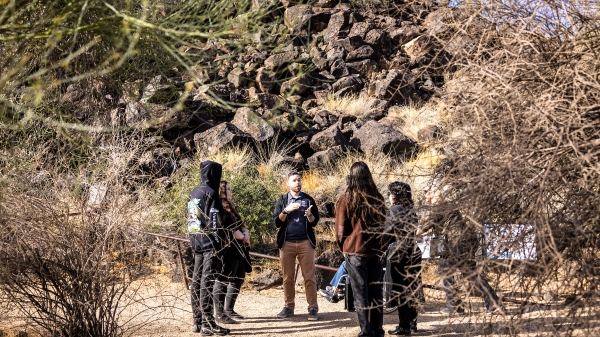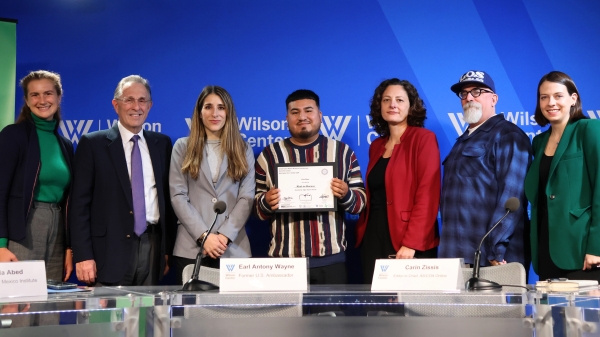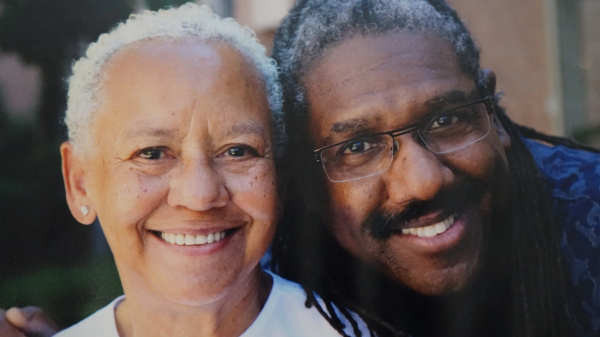Jeffrey Wilson didn’t specifically seek out Arizona State University professors when it came to filling out the advisory board for his new journal Public Humanities.
“It just turns out that the type of people we were looking for happened to be those who find their way to ASU,” said Wilson, a teacher-scholar at Harvard University. “I think it’s because there’s an alignment of mission there in terms of the scholars ASU is looking to hire, looking to support and the kind of work that we at the journal are looking to do.”
That alignment of mission is why no organization or university has more representatives on the advisory board than ASU’s four: Devoney Looser, a Regents Professor of English; Ron Broglio, director of the Humanities Institute; Sir Jonathan Bate, Regents and Foundation Professor of English; and Neal Lester, Foundation Professor of English and founding director of Project Humanities.
ASU’s representation, said Wilson, speaks to the university’s commitment to the humanities discipline and its mission to make humanities scholarship and research more accessible to the public.
“I would just call it a sort of service orientation,” Wilson said. “We’re looking to serve as many people possible with the highest-quality education, and when you’re looking to do that, you hire scholars of a certain spirit, and Devoney, Neal, Jonathan and Ron are definitely of that spirit.
“They’re kind of aligned with serving a larger public that reaches far beyond the cozy confines of academia. And that’s exactly the type of people that we want giving us advice at the journal.”
Wilson described Public Humanities as a space for sharing knowledge among scholars, students, activists, journalists, policymakers and professionals, along with readers simply interested in the world of ideas.
The initial issue, titled the "Manifesto Issue," featured articles from Looser, Lester and Bate.
Looser’s article, “The Necessity of Public Writing,” addresses the need for scholars to share their research with the general public.
“Any time academics produce a piece of scholar-facing research, they should produce a component that’s public-facing,” Looser said. “This should be a no-brainer. We need the general public to understand the value of the humanities.”
Lester’s article, “But What if I Can’t Imagine that? Rethinking and Redefining Empathy,” said people often make empathy about themselves. One example: Someone will say, “I had a really tough day at work today.” The second person, trying to empathize, will say, “I had a really tough day, too.”
“The way we’ve been taught empathy is to imagine what somebody might be going through or putting yourself in somebody else’s shoes,” Lester said. “My response to that is, you can’t. There’s no way to do that not, nor should people be asked to imagine what somebody else feels.
“Empathy is not me trying to feel what you’re feeling, because we can’t match feelings. What I can do, however, is to engage with you and ask you, based on my observations, 'Is there anything I can do to help you through what you’re going through?'”
In his article, “Teaching the Humanities for the Future Public,” Bate wrote that humanities have a “naming problem.”
“When a colleague from across the campus says that they are a scientist, everybody knows what they mean and will have some sense of what they do,” Bate wrote. “There will be visions of lab coats, spreadsheets, kit at the bench, and quadratic equations on the whiteboard. …
“As for what the humanities scholar does: There are few in the profession who do not have stories of glazed eyes and baffled expressions when they try to explain their research at cocktail parties beyond the walls of the academy.”
Bate wrote that one answer is a new Bachelor of Arts in culture, technology and environment, offered by the humanities division in The College of Liberal Arts and Sciences at ASU.
“The problem for the humanities, it is argued, is not in the content, but in the naming,” Bate wrote. “History, literature, philosophy, language, religion and so on. No one would wish to abandon these established disciplines, but is there an alternative route into the wisdom and skills they offer? To begin, that is to say, with what we might describe as applied humanities.”
Broglio said the inclusion of four ASU professors on the advisory board is a testament to the university’s “capacious” approach to humanities.
“It’s not academically siloed,” Broglio said. “It’s much more experimental. There’s a real sense from the upper administration for the need for outreach so that we’re affecting a broad swath of communities.
“Getting that signal from upper administration that it’s OK to do this kind of work is huge. Not every place has that.”
More Arts, humanities and education

Petroglyph preserve celebrates 30th anniversary with ancient, modern tales
The Deer Valley Petroglyph Preserve provides a beautiful walk through a pristine desert where chuckwalla lizards are as plentiful as the cacti that comes in many shapes and sizes.It’s also a step…

Kaleidoscope short film contest inspires powerful binational filmmaking in its second year
“We come to this country not to steal anybody’s jobs but to take advantage of the opportunities that the rest ignore. We’ve been taking care of the American soil for many years. But our hands will…

ASU's Neal Lester reflects on life, death of poet Nikki Giovanni
When Neal Lester heard on Monday that poet and activist Nikki Giovanni had died, the news hit hard.Lester, the founding director of Arizona State University’s Project Humanities and a Foundation…
